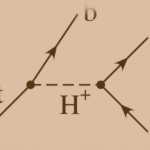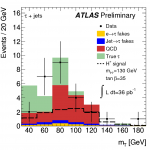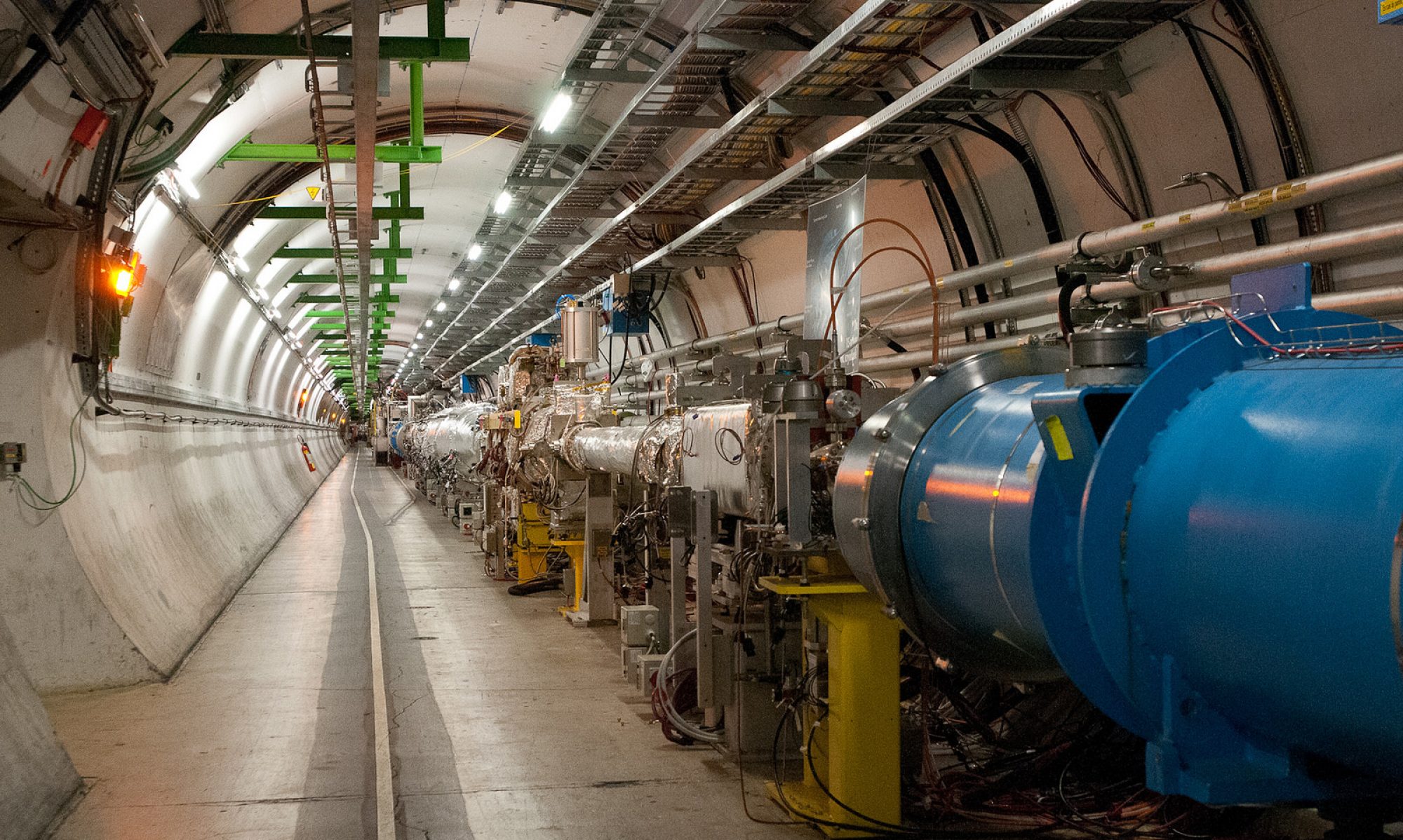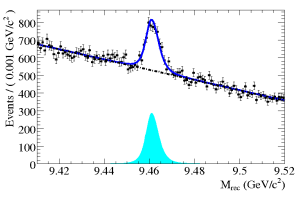
The chimera is a mythical beast,
. . . a monstrous fire-breathing female creature . . . composed of the parts of multiple animals: upon the body of a lioness with a tail that ended in a snake’s head, the head of a goat arose on her back at the center of her spine. [1]
Composed from the parts of multiple animals, the chimera plays a central role in parts of Greek mythology. Recently, my first contribution to research using the ATLAS experiment was made public. A team of 17 physicists, including myself and SMU post-doc Aidan Randle-Conde, concluded a small study that will set the stage for a much larger and more focused search this summer. What were we looking for? A subatomic chimera.
The discovery of the Higgs particle is the central quest of the Large Hadron Collider. Believed to provide mass for all known subatomic particles, the Higgs is strongly expected to exist. But it has never been observed, and while experiments at Fermilab and the CERN are racing to find this particle, so far it has escaped detection.
The Higgs that is often discussed is known as the Standard Model Higgs. There is expected to only be one, it should have no spin angular momentum (“zero spin”), no electric charge, and from that we can make predictions about how often and with whom it interacts in the subatomic world. These predictions are the guide posts for experiment; whether or not the Higgs, as envisioned in the Standard Model, is there is up to Nature.
My colleagues and I are interested in another kind of Higgs, one which naturally would arise in the situation when the Standard Model is not the be-all and end-all of theories of quantum physics and relativity. In that situation, more Higgs particles would be needed to provide mass to new subatomic particles. One new Higgs that seems to commonly arise in even modest expansions of the Standard Model is a Higgs that still has zero spin, but carries electric charge. This is the “charged Higgs boson,” and this is what we started looking for this winter.
The 17 ATLAS physicists I mentioned above were just one of a few teams looking for this chimera; there are many ways to hunt for such a rare and lovely beast as a particle that gives rise to mass, and couples through the weak force, and couples through the electromagnetic force. The charged Higgs is also predicted to behave in certain ways, and a bunch of us have been looking for this particle decaying into a tau lepton and a tau neutrino. This is challenging search, but the rewards of the study have been worth it.

In the process of looking for this particle, I was able to learn something about top quarks and how to reconstruct them in an experiment like ATLAS. I’ve never worked with so heavy a quark before, and certainly not at a hadron collider, so for me this was a really novel experience. It was like being in graduate school all over again, albeit with more experience. Top quarks may decay to this charged Higgs, and we’re working to see if that is true. By the end of the summer, we expect to have a really solid and potentially field-leading first search for this process.
Meanwhile, enjoy the fruits of our labor from the 2010 data. We’ve begun to understand processes that could fake the signature of this charged Higgs boson, and armed with this information we’re gearing up for a real search for the summer.
- Data-driven estimation of the background to charged Higgs boson searches using hadronically-decaying τ final states in ATLAS.
- Study of discriminating variables for charged Higgs boson searches in tt events with leptons, using 35 pb−1 of data from the ATLAS detector

